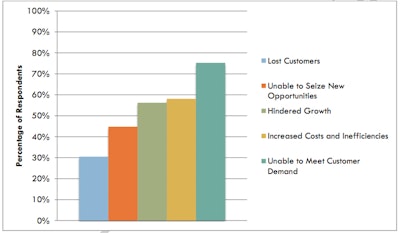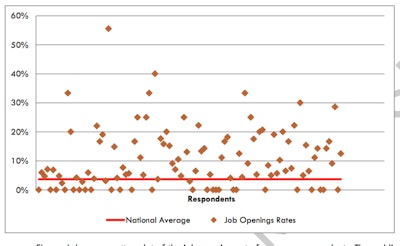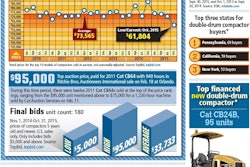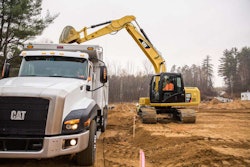
Construction equipment dealers are reporting significant shortages in getting skilled help, a lack that is directly impacting their bottom line, according to a survey released Wednesday by the Associated Equipment Distributors Foundation.
More than 50 percent of survey respondents said the inability to find qualified workers is both hindering growth and increasing costs. AED says this hindrance could be costing its full dealer membership $2.4 billion per year.
If employment trends hold true, eliminating the current skills gap could lead to an additional 4,000 jobs nationwide, AED says.
 AED survey responses to the question: “If your company has had difficulty finding technicians, how has this affected your company? (Multiple answers accepted.)
AED survey responses to the question: “If your company has had difficulty finding technicians, how has this affected your company? (Multiple answers accepted.)Surveyed dealers place the blame for this skills gap on several factors, all of which will sound familiar to contractors: failures in the technical education system, retiring Baby Boomers and the poor perception of vocational careers among the young.
Also pointed out: while there are several programs available for re-skilling older workers and at-risk demographics, there’s a general lack of initiatives for helping young people in general who want to pursue a technical career, AED says.
The survey, which had 105 AED-member dealer respondents, found:
- More than 60 percent of dealer respondents said the skills gap makes it difficult to meet customer demand.
- Compared with the nationwide job opening rate of 3.7 percent, responding dealers have an 11.34 percent job opening rate, more than three times the national average. Dealers in the Western and Southeastern portions of the country report the highest job opening rate, almost 18 percent.
- The national average for the number of days a job remains open is 36.1 days. In contrast, dealers reported their positions remain open 76.4 days, with a few saying they have had positions open for a year or more.
 Job opening rates of survey respondents. The red line indicates the national job opening rate of 3.7 percent, as determined by the U.S. Bureau of Labor Statistics. AED survey respondents had mean job opening rates of roughly 11.34 percent, more than three times the national average.
Job opening rates of survey respondents. The red line indicates the national job opening rate of 3.7 percent, as determined by the U.S. Bureau of Labor Statistics. AED survey respondents had mean job opening rates of roughly 11.34 percent, more than three times the national average.










